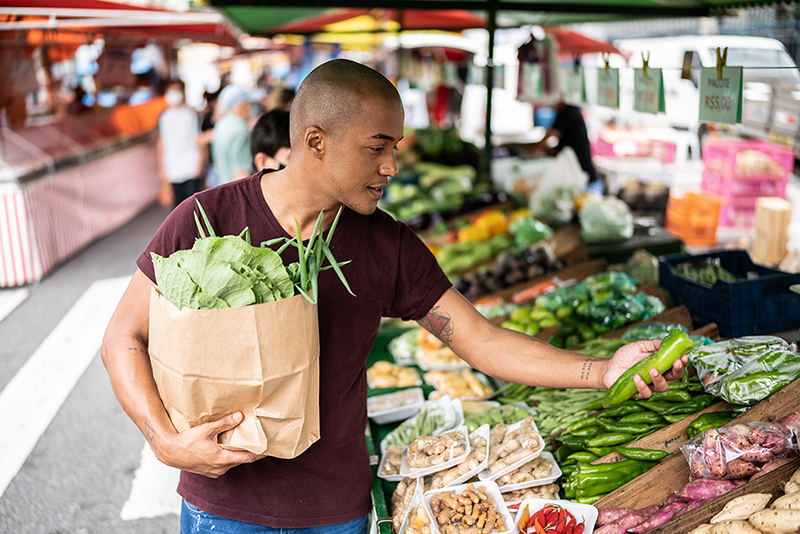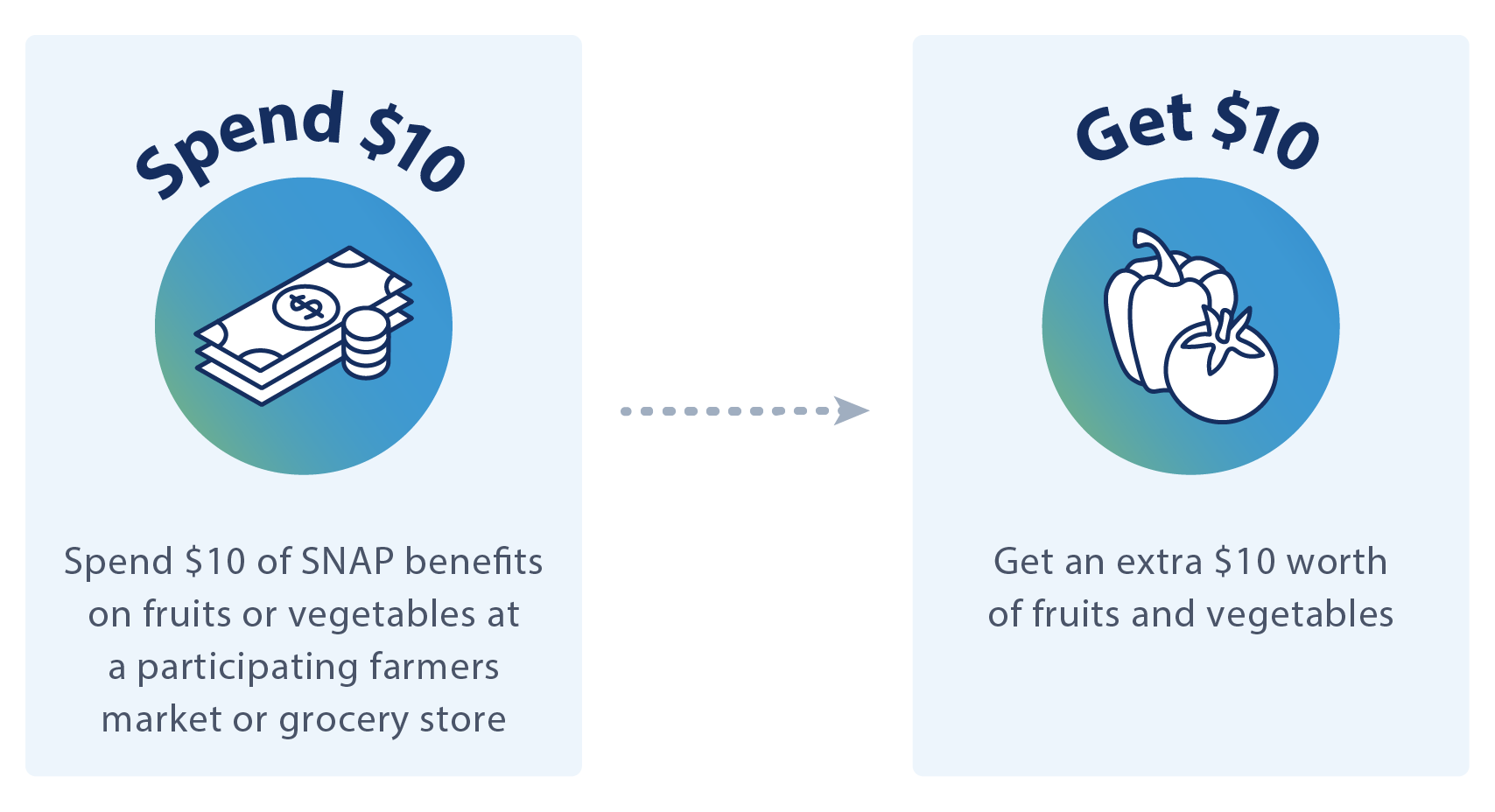
At BDT we focus on “dignity” a lot and what that means to people in different contexts. For me, I find dignity in riding my bike to the Bloomfield Farmers Market in Pittsburgh to buy strawberry and rhubarb to make pie in the spring, and bell peppers and onions for fajitas in late summer. Dignity as it relates to food justice means having good access to nutritious, affordable, and culturally appropriate food – and this should be possible for everyone regardless of income level.
After I founded the Root Causes Fresh Produce Program at Duke Health, which provides free produce to low-income patients, I once had a patient tell me how grateful they were to try blueberries for the first time and also introduce them to her grandchildren. How do we make these experiences of good local food universally accessible, regardless of income?
Access to nutritious food like fruits and vegetables is limited for many families due to food apartheid, in which decades of structural and racial inequity have caused low access to grocery stores and/or an overabundance of fast food and convenience stores, particularly in neighborhoods whose residents have low incomes and are primarily people of color. Access to healthy food can be even tougher for people living with disabilities or trouble with mobility, people with low access to public transportation or personal vehicles, and working adults who are juggling multiple jobs and family care.
The Supplemental Nutrition Assistance Program (SNAP) helps low-income Americans put food on the table for themselves and their families by providing a monthly allotment of money for groceries. Yet, fresh produce can often be more expensive and lower quality in lower income neighborhoods.
"Double Up Bucks,” also referred to as “Double Bucks,” “Healthy Bucks,” “Good Food Bucks,” and many other names depending on the state, provides matching SNAP dollars to spend on produce, so people’s benefits go further when they buy fruits and vegetables (e.g., spend $10 of SNAP benefits at a participating farmers market or grocery store to get a total $20 worth of fruits and vegetables). SNAP recipients are automatically eligible for Double Up Bucks where these programs exist. Since the inception of Double Up Bucks – likely around 2005 in New York – at least 30 states have established some form of monetary nutrition incentive for fresh produce, thanks to organizations like the Fair Food Network based in Michigan.

By using Double Up Bucks, individuals can support local farmers at markets and food stands. In some states, people can only use Double Up Bucks at certain farmers’ markets and vendors, while in others, people can use Double Up Bucks to buy produce at the grocery store and at supermarkets. Use this tool to look up your state’s participation in the program or a similar one.
In a study conducted by the Gretchen Swanson Center for Nutrition, researchers found that low-income families who used nutrition incentives like Double Up Bucks were more likely to report eating more fruits and vegetables. In fact, nutrition incentive participants might even be eating about a quarter cup more fruits and vegetables than the average American. Studies predict that if we made nutrition incentives accessible to more people, it could result in $100 billion in healthcare savings through preventing illnesses like type 2 diabetes and heart disease. At the same time, nutrition incentives put more dollars into local economies because of the support for small farmers and food businesses, thereby helping communities thrive.
BDT operates Benefits Centers in six states, including Michigan, North Carolina, and South Carolina, where we assist people in applying for SNAP by phone. To assist individuals who are likely eligible for benefits but not enrolled, we send outreach letters and text messages, letting them know we are here to help them apply. Recently, we’ve added language about nutrition incentive programs to our outreach letters in Michigan (Double Up Food Bucks) and in South Carolina (Healthy Bucks) so people likely eligible for SNAP know they can buy twice the amount of fresh produce if they enroll in SNAP benefits.
Studies predict that if we made nutrition incentives accessible to more people, it could result in $100 billion in healthcare savings through preventing illnesses like type 2 diabetes and heart disease.
In some states, including North Carolina, SNAP is administered by counties instead of the state, meaning it’s up to each county to run nutrition incentive programs. In Durham and surrounding counties in the Triangle, we’re conducting A/B testing in our outreach letters to see if sharing information about using Double Bucks at participating farmers’ markets might lead more likely-eligible people to apply for SNAP through BDT.
SNAP is an important tool not only for fighting hunger, but also improving food and nutrition security for low-income people, which can then translate to better health outcomes and healthcare cost savings. Nutrition incentive programs were originally funded by philanthropic foundations, and these foundations continue to play a major role, like the Rockefeller Foundation, who this year committed $100 million to Food is Medicine. In addition, starting in 2014, the USDA made significant investments in expanding and evaluating nutrition incentive programs through the Gus Schumacher Nutrition Incentive Program. Increasingly, healthcare organizations around the country are also investing in nutrition incentives as part of the “Food is Medicine” movement to improve health and nutrition for their patients and members – and SNAP access is an important part of these strategies.
It’s extremely heartening to see how the government, healthcare, and philanthropic sectors are working together so that programs like Double Up Bucks can make SNAP dollars go further, and participants can buy more nutritious food from local farmers and businesses.
